Increased solar activity continues
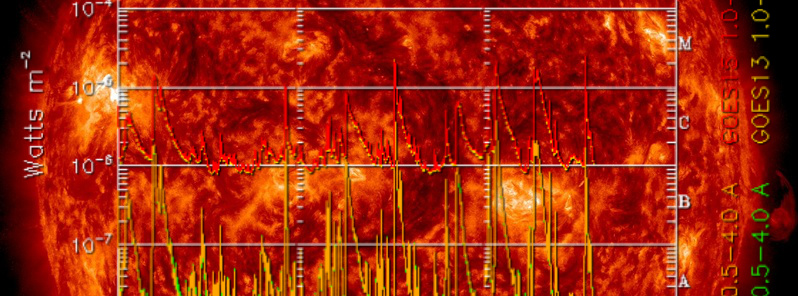
Solar activity continues at moderate levels today with two M-class flares (M2.0 and M1.7) erupting from Region 2268 and one from newly numbered Region 2277 (M2.4).
The first M-class solar flare of the day was an impulsive M2.0 which erupted at 00:44 UTC. It was followed by a long duration M1.7 which started at 05:29, peaked at 05:36 and ended at 06:35 UTC.
The third solar flare today was an impulsive M2.4 which erupted at 12:16 UTC.
No apparent Earth-directed Coronal Mass Ejections (CMEs) were observed in available LASCO coronagraph imagery from these events.
"Beta-Gamma" classified Region 2268 is still in geoeffective position and Earth-directed CMEs are still possible. However, this region is now rotating away from the center of the disk and a slight decay was noted in its intermediate areas.
Region 2277 also has 'Beta-Gamma' magnetic configuration and is capable of producing strong eruptions on the Sun. This region is consolidating and rotating toward the center of the disk, into a more geoeffective position.
The threat of Earth-directed CMEs will soon switch from Region 2268 to Region 2277.
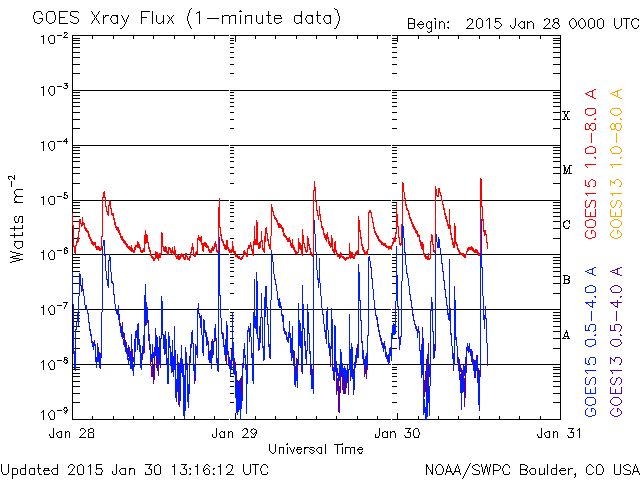
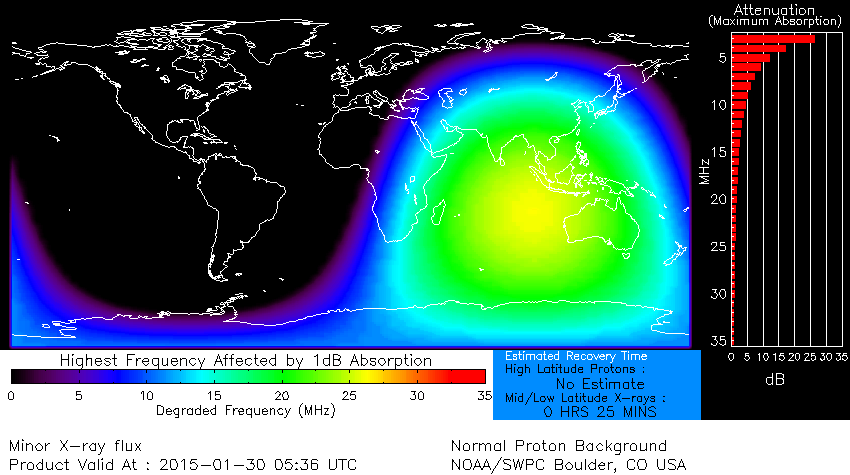
Global D-Region Absorption Prediction model at the peak of long duration M1.7 solar flare today
Sunspots
There are currently 8 numbered sunspot regions on the visible disk.
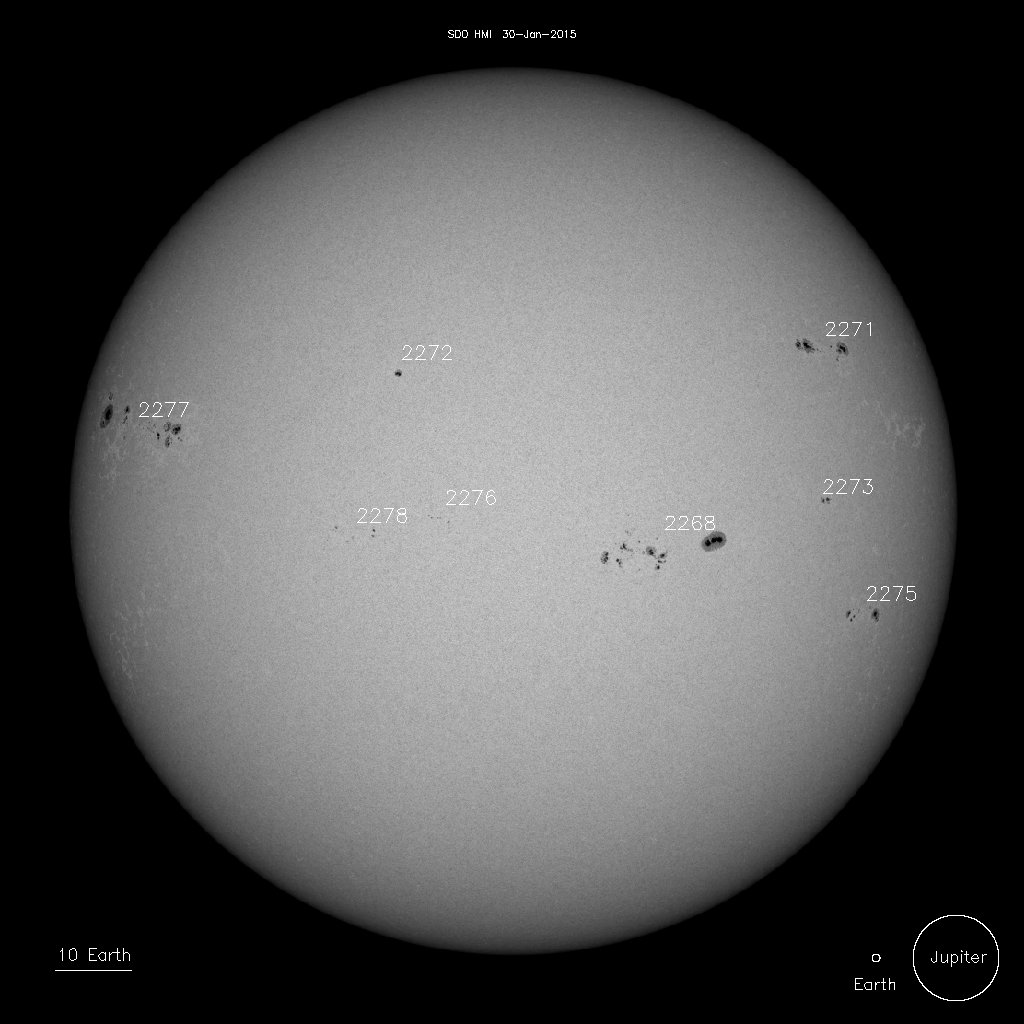
Sunspots on January 30, 2015. Image credit: NASA SDO/HMI
2268 – Beta-Gamma
2271 – Beta-Gamma
2272 – Alpha
2273 – Beta
2275 – Beta-Gamma
2276 – Beta
2277 – Beta-Gamma
2278 – Beta
Forecast
Solar activity is likely to be at moderate levels (R1-R2, Minor-Moderate) with a chance for X-class flaring (R3-Strong or greater) activity over the next three days (January 30 – February 1). The most likely source for any enhanced flare activity are Regions 2268 and 2277 due to their large size and complex magnetic structures.
The greater than 2 MeV electron flux at geosynchronous orbit is forecast to be at normal to moderate levels on January 30 and 31 with moderate to high levels possible on February 1 due to coronal hole influence. There is a chance for a greater than 10 MeV proton flux reaching S1-Minor or above levels over the next three days as Region 2268 continues to rotate into a better connected location.
The solar wind environment is expected to remain enhanced. Additional agitations in solar wind parameters are expected late today and early tomorrow. Solar wind speeds could potentially reach the 550 km/s to 650 km/s range.
Quiet to minor geomagnetic storm levels (NOAA Scale G1) are expected on January 30 and 31 as the large extension off the southern crown polar coronal hole moves into a geoeffective position. By February 1, mostly quiet to active conditions are expected.
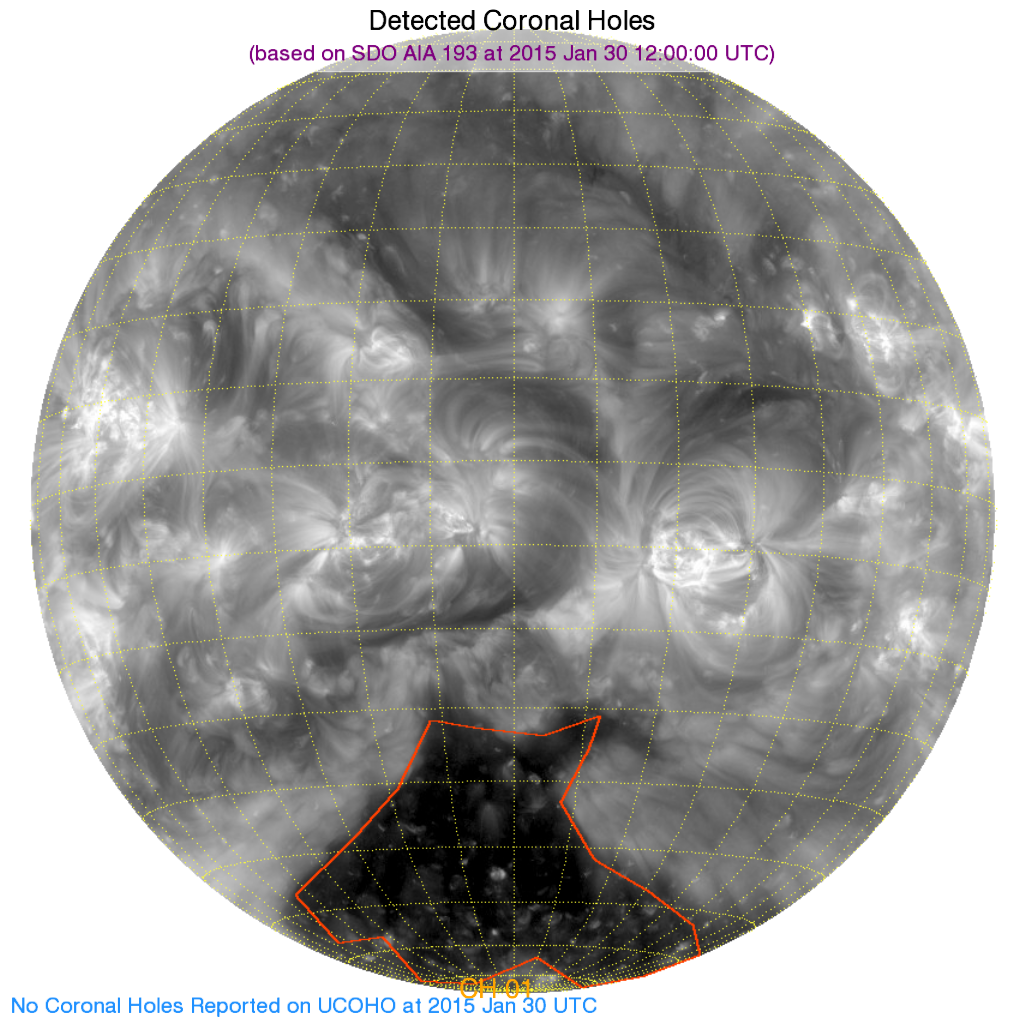
Featured image: NASA SDO/AIA 304 at 12:15 UTC on January 30 with NOAA/SWPC X-ray flux graph for January 28 – 30, 2015

Commenting rules and guidelines
We value the thoughts and opinions of our readers and welcome healthy discussions on our website. In order to maintain a respectful and positive community, we ask that all commenters follow these rules:
We reserve the right to remove any comments that violate these rules. By commenting on our website, you agree to abide by these guidelines. Thank you for helping to create a positive and welcoming environment for all.